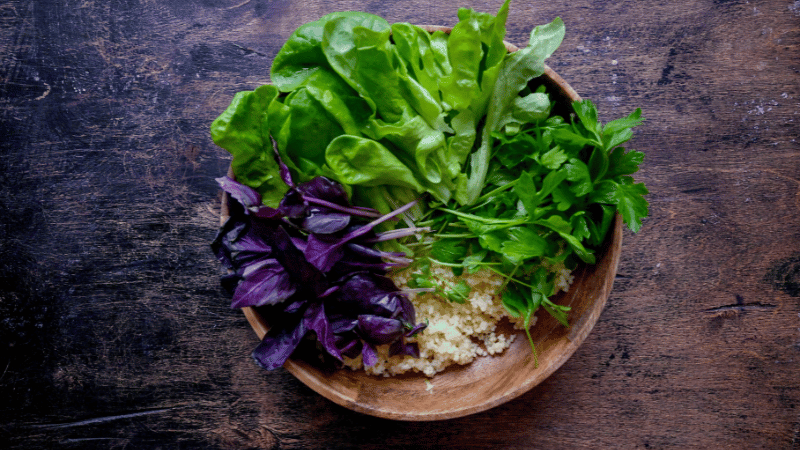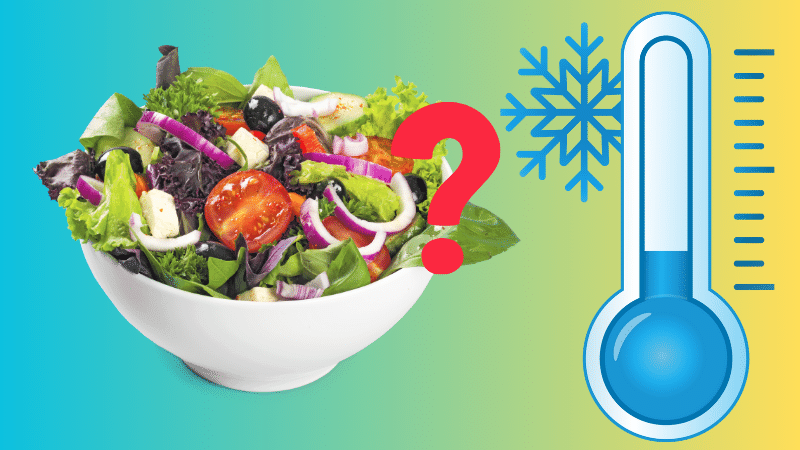A green salad is a refreshing and nutritious dish that is enjoyed by many. Whether you’re making it at home or ordering it at a restaurant, it’s important to understand the safe food preparation practices to ensure its freshness and quality.
Proper temperature control not only limits the growth of bacterial pathogens but also inactivates certain pathogens over time. This ensures that your green salad remains safe to eat and minimizes the risk of foodborne illness.
Key Takeaways:
- Maintain a temperature of 41°F (5°C) or below for maximum cold holding of green salad.
- Refrigeration helps prevent the growth of pathogens on cut leafy greens.
- Proper temperature control is essential for safe food preparation and maintaining freshness.
- Regular temperature monitoring is necessary to ensure compliance with safe temperature requirements.
- Adhering to food safety guidelines helps minimize the risk of contamination and ensures the safety of your green salad.
Importance of Temperature Control for Cut Leafy Greens

- Cut leafy greens are vulnerable to pathogen growth due to their altered physical state after being cut or shredded
- According to FDA Maintaining a temperature of 41°F (5°C) or below can prevent pathogen growth on cut leafy greens, minimizing foodborne illness risk
- Refrigeration at recommended temperatures:
- Inhibits growth of bacterial pathogens
- Inactivates certain pathogens over time
- Temperature control is essential for:
- Safe food preparation
- Maintaining optimal health and freshness of salads
- Food establishments must prioritize temperature control to mitigate potential contamination during storage and display
| Benefits of Temperature Control for Cut Leafy Greens |
|---|
| Prevents the growth of bacterial pathogens |
| Inactivates certain pathogens over time |
| Mitigates the impact of contamination |
| Ensures safe food preparation |
| Maintains optimal health and freshness |
The Shelf Life of Fresh-Cut Leafy Greens
Typical Shelf Life of Fresh-Cut Leafy Greens

| Green | Shelf Life (Approx.) |
|---|---|
| Romaine Lettuce | 10-14 days |
| Spinach | 7-10 days |
| Arugula | 7-10 days |
| Kale | 7-10 days |
- Fresh-cut leafy greens, including green salads, have an extended shelf life beyond the “sell by” or “use by” date
- They can maintain sensory quality for at least 1 week, often longer
- Bagged, fresh-cut leafy greens typically have a shelf life of approximately 12-16 days
- While pathogen numbers may increase over time, greens may still appear visually acceptable to consumers
To ensure freshness and maintain quality:
- Proper storage and handling practices are crucial
- Storing at recommended temperatures can extend shelf life
- Check expiration dates and discard greens exceeding recommended freshness timeline
Following good practices:
- Proper storage temperatures
- Handling procedures
- Monitoring expiration dates
Storage and Handling of Cut Leafy Greens
| Guidelines | Storage and Handling Practices |
|---|---|
| Receiving Cut Leafy Greens | Check temperature upon receipt; ensure greens have been stored at 41°F or below. |
| Storage Temperature | Maintain greens at a temperature of 41°F or below during storage and display. |
| Temperature Monitoring | Regularly monitor temperatures using air temperature monitoring devices in refrigerators and cold storage units. |
| In-house Cutting | Discard greens if not sold or served within 7 days of cutting. |
- Proper storage and handling is crucial for safety and quality of cut leafy greens/green salad
- When receiving:
- Check that greens were stored at 41°F (5°C) or below
- Verify temperature using thermocouple or infrared thermometer
- This prevents temperature abuse and pathogen growth
- During storage and display:
- Maintain temperature at 41°F (5°C) or below
- This inhibits pathogen growth
- Preserves freshness and quality
- Conduct regular temperature monitoring
- Use air temperature monitoring devices
- Check refrigerators and cold storage units
- Ensure proper operation and temperature control
Conclusion
By placing a strong emphasis on temperature monitoring and food safety measures, you can confidently handle and store cut leafy greens.
Remember to regularly check the temperature, follow the recommended requirements, and always prioritize the safety and freshness of the food.
Your diligence in these areas will go a long way in protecting the well-being of your customers and ensuring the success of your food establishment.
source:
https://en.wikipedia.org/wiki/Salad
Zaki Infitar is the driving force and creative mind behind GreenBuilt.co. As a self-taught gardener with an unwavering passion for all things green, Zaki’s journey into the world of gardening is a testament to his dedication and love for nature.

